Testing and Analysis on the Spatial and Temporal Distribution of Light Intensity and CO2 Concentration in Solar Greenhouse
Abstract
1. Introduction
2. Materials and Methods
2.1. Test Site
2.2. Data Acquisition
2.2.1. Environmental Monitoring Systems in Greenhouses
2.2.2. Greenhouse External Environment Monitoring Device
2.3. Test Program
2.3.1. Horizontal Layout Plan
2.3.2. Vertical Layout Plan
2.4. Spatio-Temporal Distribution Modeling Method
3. Results and Discussion
3.1. Horizontal Data Analysis Results
3.1.1. Temperature and Humidity
3.1.2. Light Intensity
3.1.3. CO2 Concentration
3.2. Vertical Data Analysis Results
3.2.1. Temperature and Humidity
3.2.2. Light Intensity
3.2.3. CO2 Concentration
3.3. Coupling Model of Solar Greenhouse Environmental Parameters
3.3.1. Model of CO2 Concentration–Light Intensity–Time
3.3.2. Model of CO2 Concentration–Light Intensity–Indoor Temperature
4. Conclusions
Author Contributions
Funding
Institutional Review Board Statement
Informed Consent Statement
Conflicts of Interest
References
- Miao, X. Talking about facility horticulture engineering and China’s agricultural modernization. Xin NongCun 2018, 21, 135. [Google Scholar]
- Zhao, J.; Li, Z.; Wang, W.; Li, J.; Cao, R. Spatial and temporal distribution tst and analysis of tomato planting environment parameters in solar greenhouse. J. Shanxi Agric. Sci. 2019, 47, 2172–2176+2181. [Google Scholar]
- Cheng, X. Predication and CFD Modeling for Greenhouse Microclimates Temporospatial Distributions. Ph.D. Thesis, Jiangsu University, Zhenjiang, China, 2011. [Google Scholar]
- Li, M.; Chen, S.; Liu, F.; Zhao, L.; Xue, Q.; Wang, H.; Chen, M.; Lei, P.; Wen, D.; Antonio Sanchez-Molina, J.; et al. A risk management system for meteorological disasters of solar greenhouse vegetables. Precis. Agric. 2017, 18, 997–1010. [Google Scholar] [CrossRef]
- Chen, S.; Li, Z.; Liu, F.; Yang, S.; Li, M. Risk evaluation of solar greenhouse cucumbers low temperature disaster based on GIS spatial analysis in Tianjin, China. Geomat. Nat. Hazards Risk 2019, 10, 576–598. [Google Scholar] [CrossRef]
- Kittas, C.; Karamanis, M.; Katsoulas, N. Air temperature regime in a forced ventilated greenhouse with rose crop. Energy Build. 2005, 37, 807–812. [Google Scholar] [CrossRef]
- Sethi, V.P. On the selection of shape and orientation of a greenhouse: Thermal modeling and experimental validation. Solar Energy 2009, 83, 21–38. [Google Scholar] [CrossRef]
- Patil, S.L.; Tantau, H.J.; Salokhe, V.M. Modelling of tropical greenhouse temperature by auto regressive and neural network models. Biosyst. Eng. 2008, 99, 423–431. [Google Scholar] [CrossRef]
- Hamad, I.H.; Chouchaine, A.; Bouzaouache, H. On modeling greenhouse air-temperature: An experimental validation. In Proceedings of the 18th International Multi-Conference on Systems, Signals & Devices (SSD), Monastir, Tunisia, 22–25 March 2021. [Google Scholar]
- Cayli, A. Temperature and relative humidity spatial variability: An assessment of the environmental conditions inside greenhouses. Fresenius Environ. Bull. 2020, 29, 4954–4962. [Google Scholar]
- He, Y.; Xu, H.; Li, T.; Yakakuql, T. The change of Temperature of The Back Wall in Solav Greenhouse and Forecasting Model. North. Hortic. 2012, 1, 34–39. [Google Scholar]
- Yang, X.; Zhuo, B.; Qi, Z. The Vertical and Horizontal Distribution of Temperature in Solar Greenhouse. Hebei Norm. Univ. J. 2005, 29, 79–84. [Google Scholar]
- Le, Z.; Shi, M.; Wei, Q.; Gong, Z.; Li, X. Temperature Variation Charcteristics in East-West Direction of Solar Greenhouse with Large Length. Guizhou Agric. Sci. 2022, 50, 94–102. [Google Scholar]
- Zhang, X.; Lv, J.; Xie, J.; Yu, J.; Zhang, J.; Tang, C.; Li, J.; He, Z.; Wang, C. Solar Radiation Allocation and Spatial Distribution in Chinese Solar Greenhouses: Model Development and Application. Energies 2020, 13, 1108. [Google Scholar] [CrossRef]
- Mobtaker, H.G.; Ajabshirchi, Y.; Ranjbar, S.F.; Matloobi, M. Simulation of thermal performance of solar greenhouse in north-west of Iran: An experimental validation. Renew. Energy 2019, 135, 88–97. [Google Scholar] [CrossRef]
- LÜ, H.; Niu, Y.; Zhang, M.; Li, H. Analysis of Variation Trend of Light Intensity and Air Temperatureand Humidity in Solar Greenhouse. Trans. Chin. Soc. Agric. Mach. 2022, 52, 410–417. [Google Scholar]
- Gao, Q.; Liang, Y.; Duan, A. Light characteristics and its changing laws in solar greenhouse. Trans. Chin. Soc. Agric. Eng. 2003, 19, 200–204. [Google Scholar]
- Tong, G.; Wang, E.; Wang, T.; Meng, S. Test and analysis of indoor environment of Liaoshen Type I solar greenhouse. Liaoning Agric. Sci. 2003, 5, 11–12. [Google Scholar]
- Zhang, Y.; Jung, Y.; Freifeld, B.; Finsterle, S. Using distributed temperature sensing to detect CO2 leakage along the injection well casing. Int. J. Greenh. Gas Control 2018, 74, 9–18. [Google Scholar] [CrossRef]
- Yang, Y.; Guo, Y.; Sun, X.; Li, T. Analysis of CO2 concentration change of long-season tomato cultivation in solar greenhouse. J. Shenyang Agric. Univ. 2000, 31, 82–85. [Google Scholar]
- Assadi-Langroudi, A.; O’Kelly, B.C.; Barreto, D.; Cotecchia, F.; Dicks, H.; Ekinci, A.; Garcia, F.E.; Harbottle, M.; Tagarelli, V.; Jefferson, I.; et al. Recent Advances in Nature-Inspired Solutions for Ground Engineering (NiSE). Int. J. Geosynth. Ground Eng. 2022, 8, 3. [Google Scholar] [CrossRef]
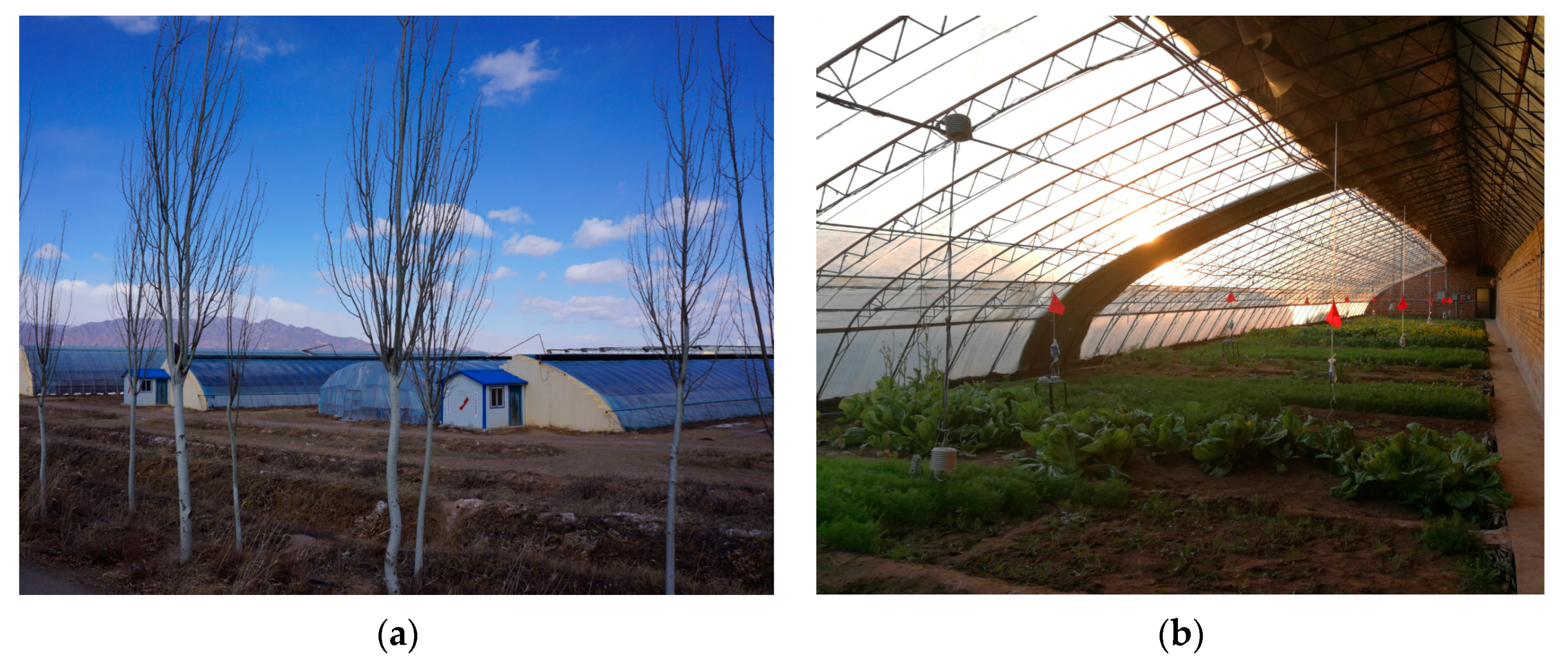
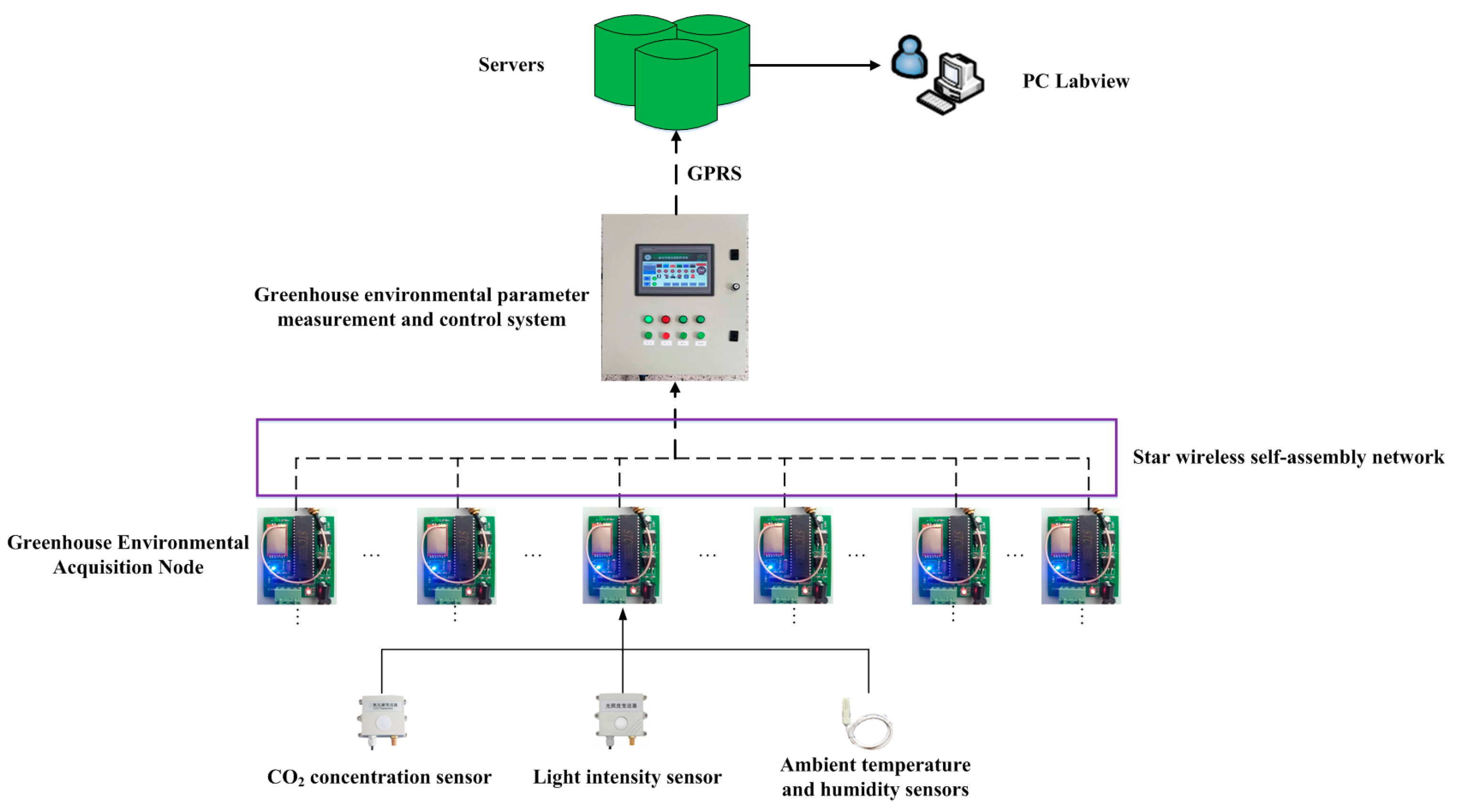



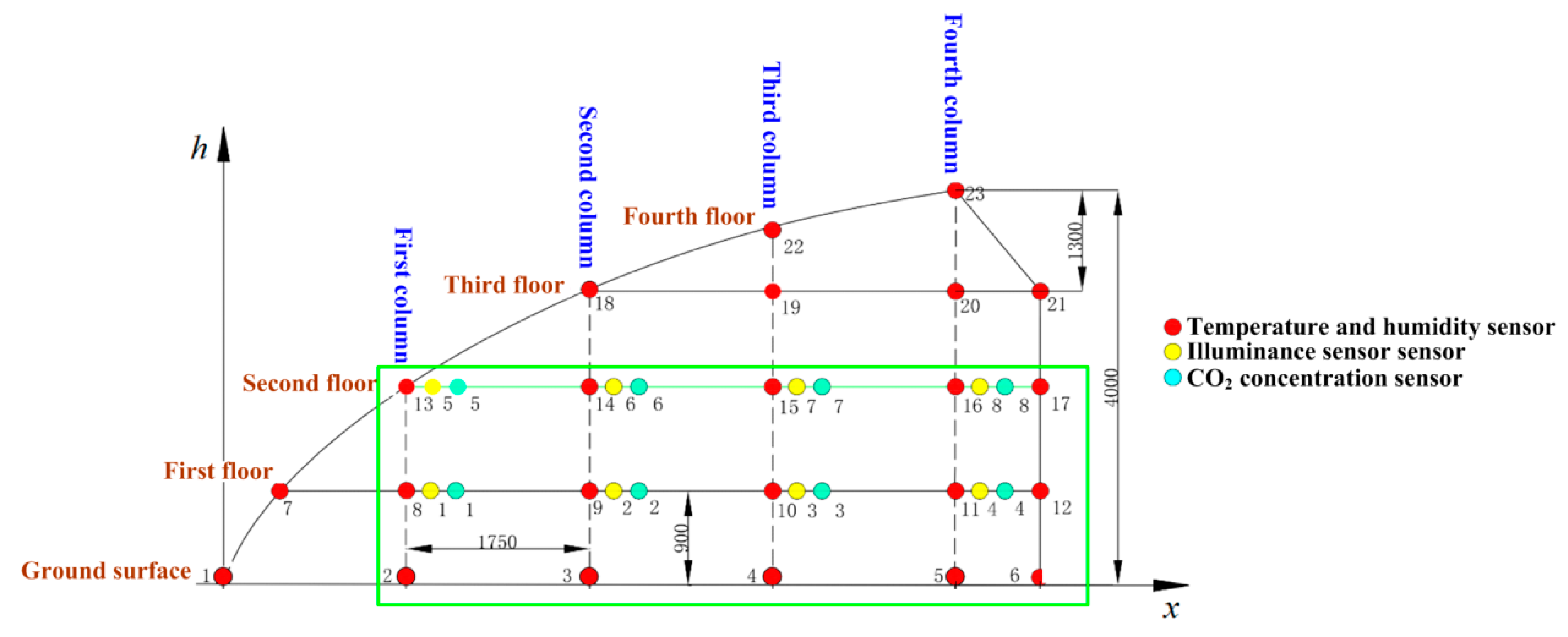
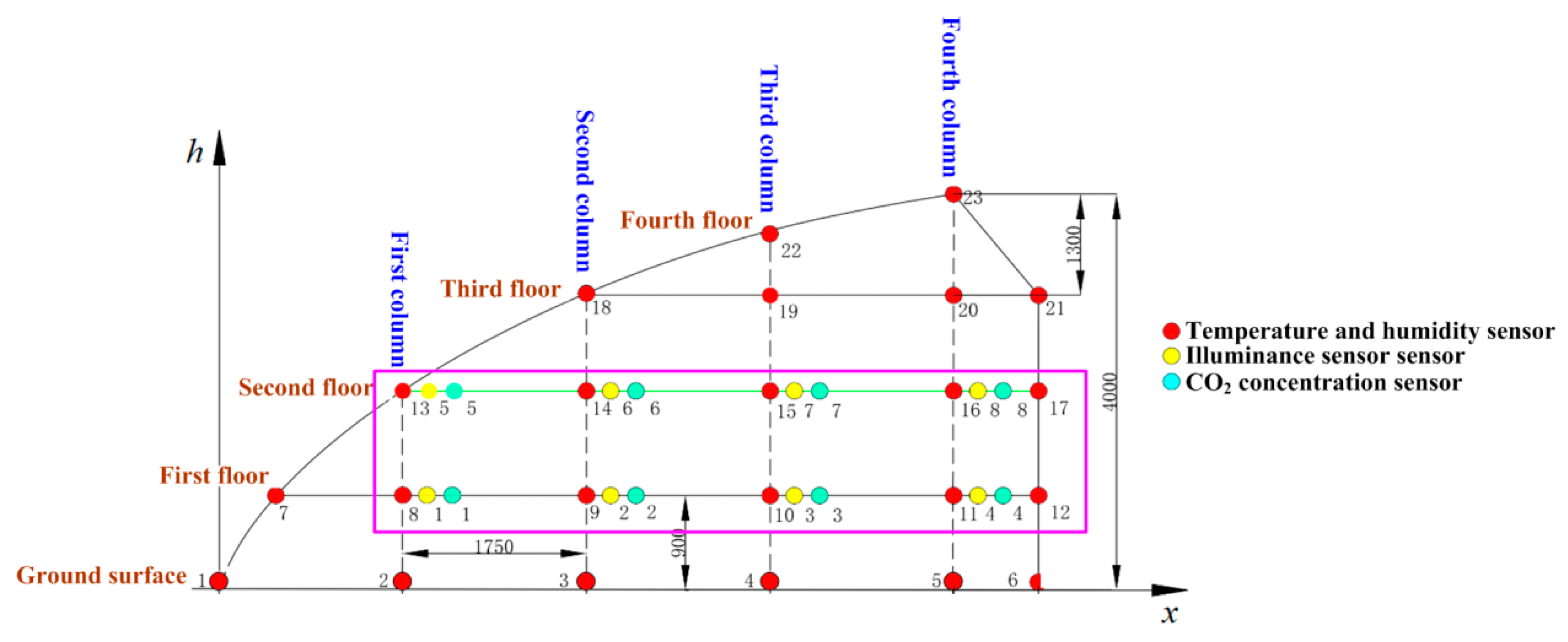
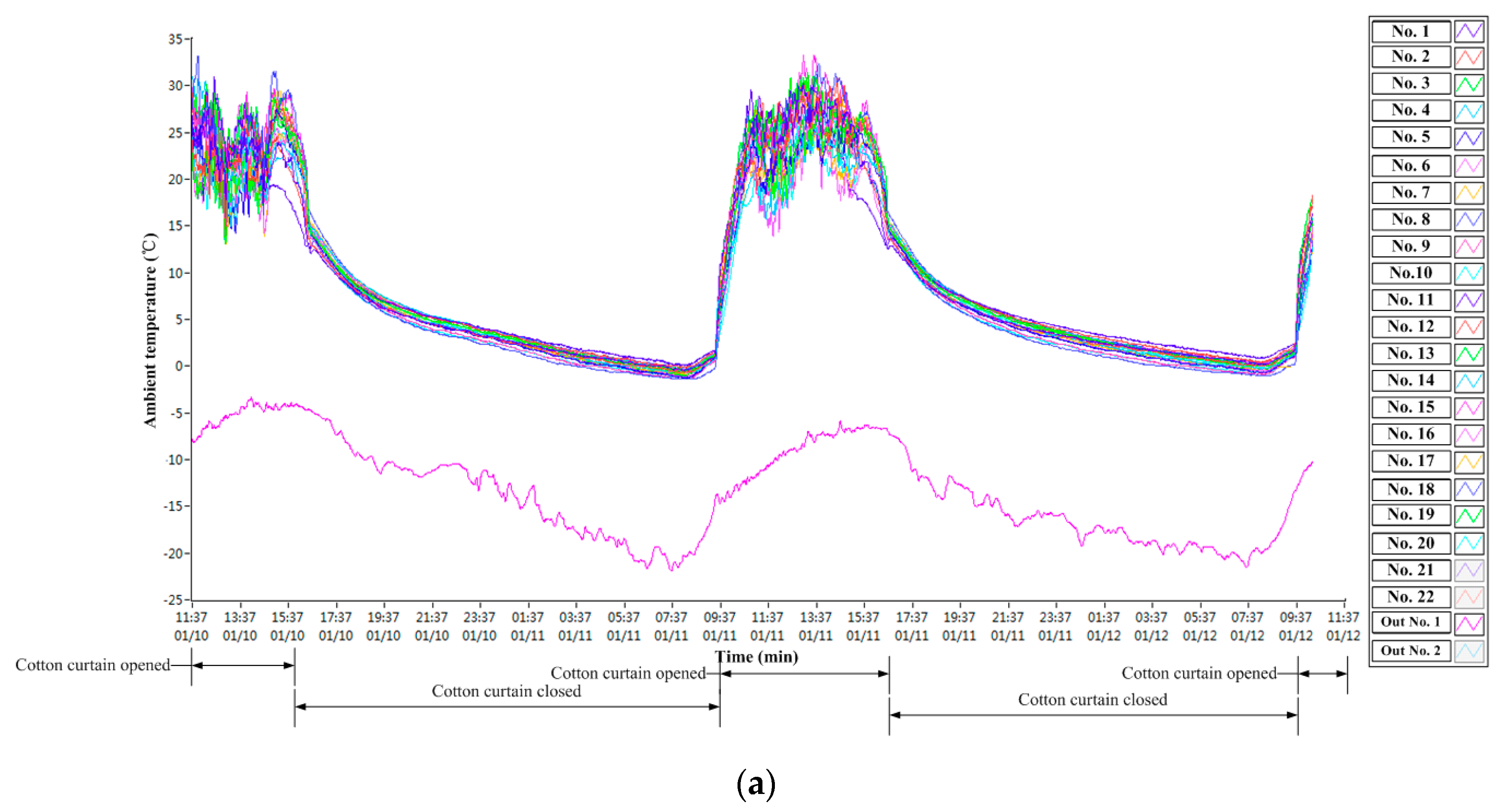
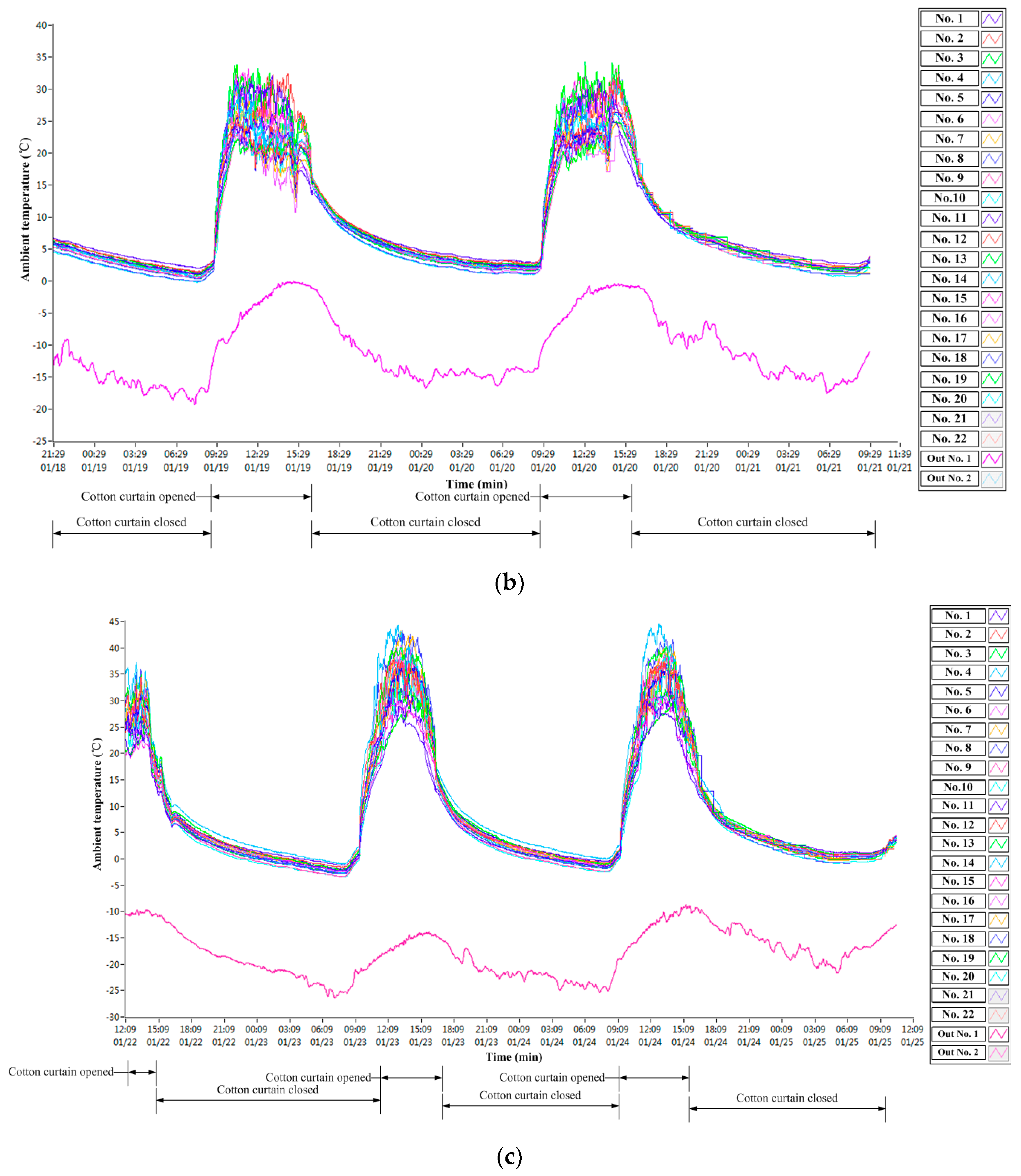
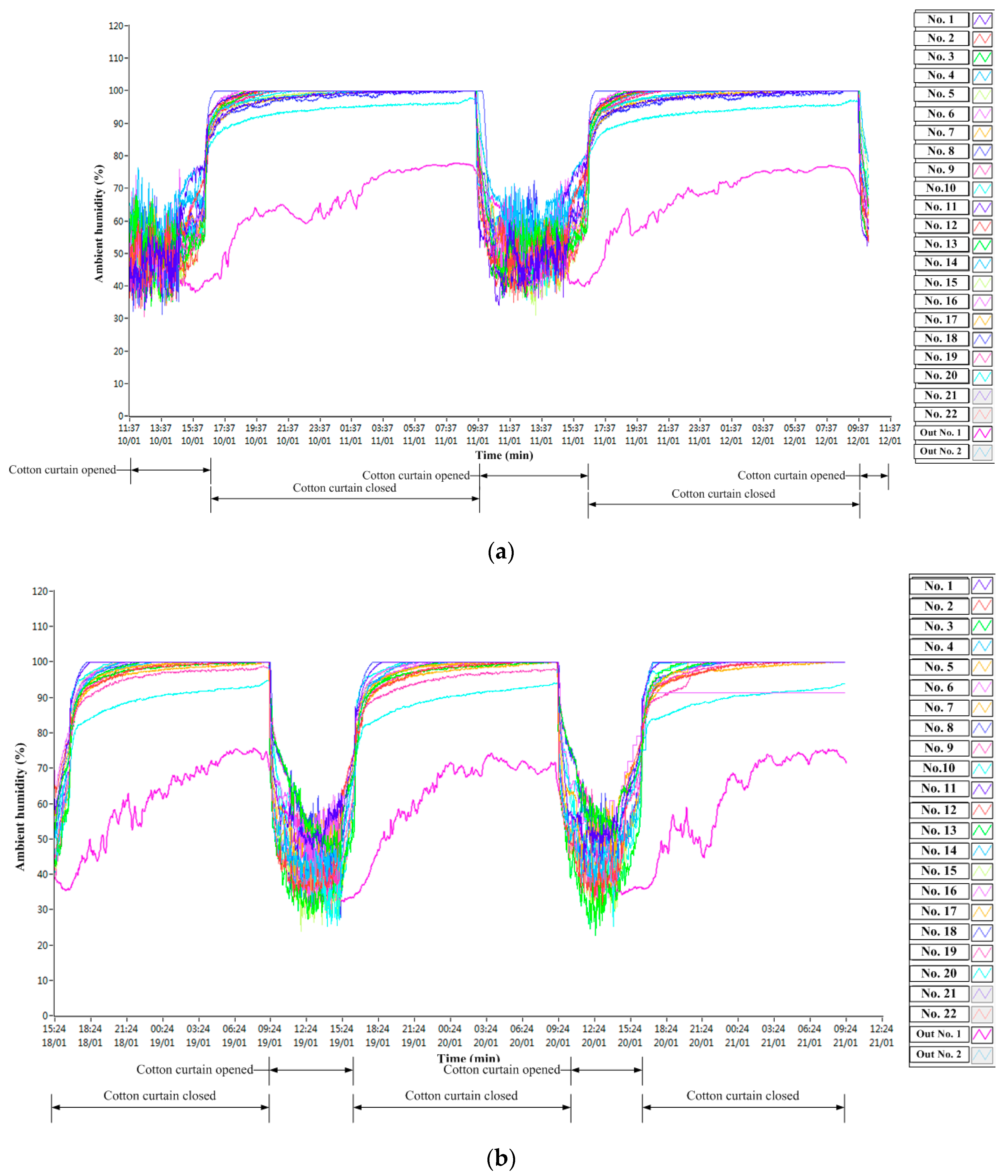

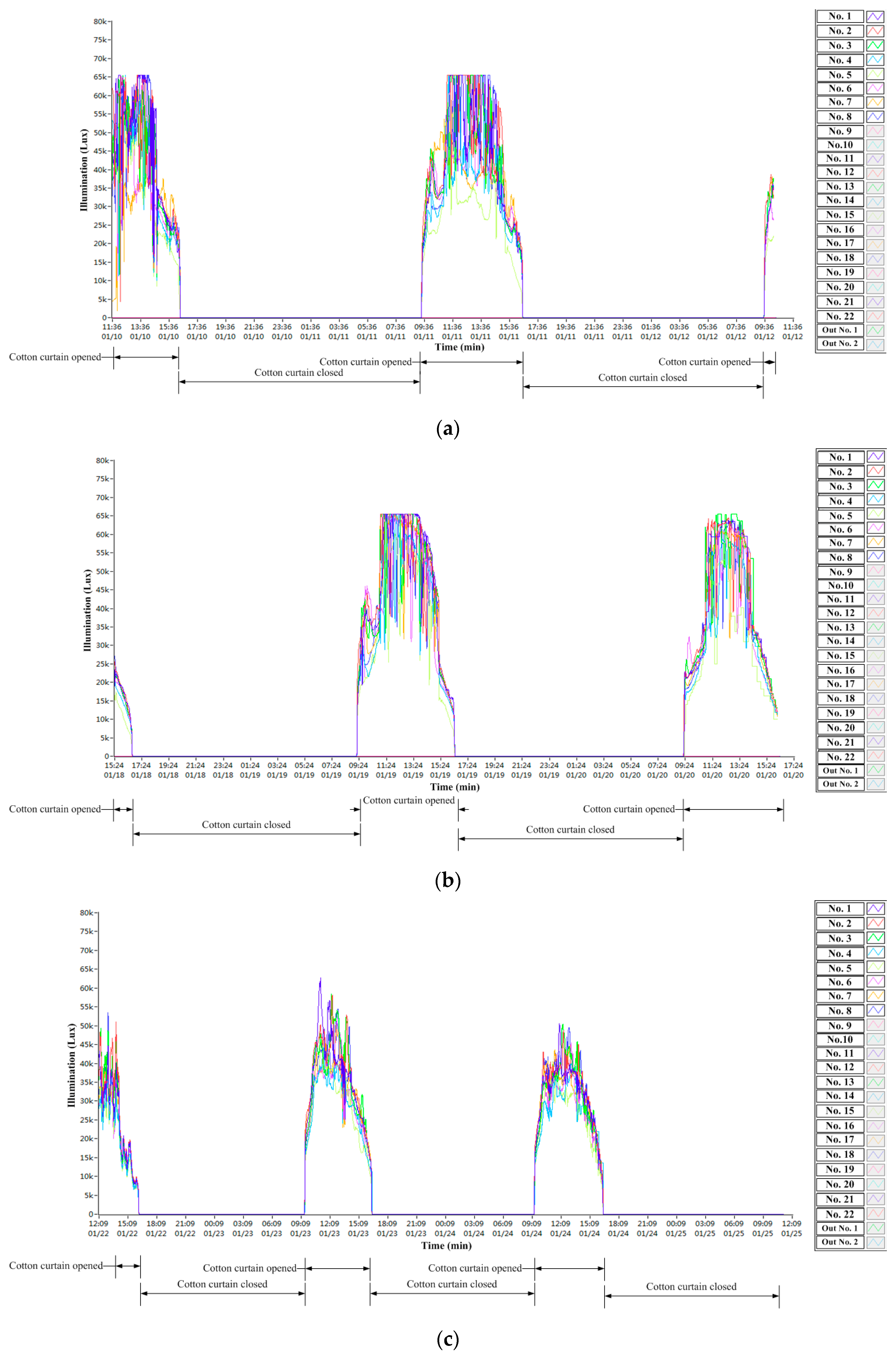
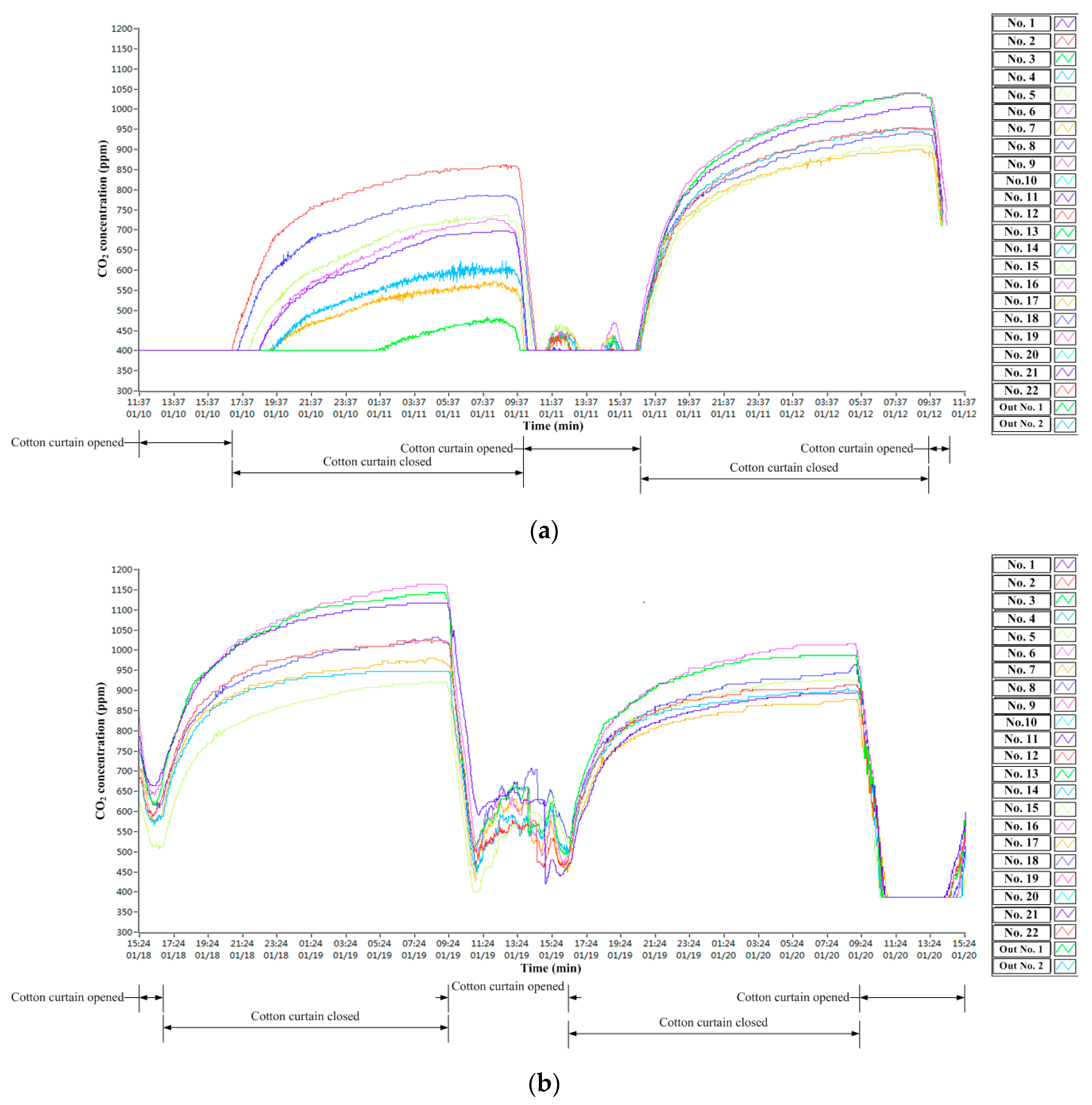

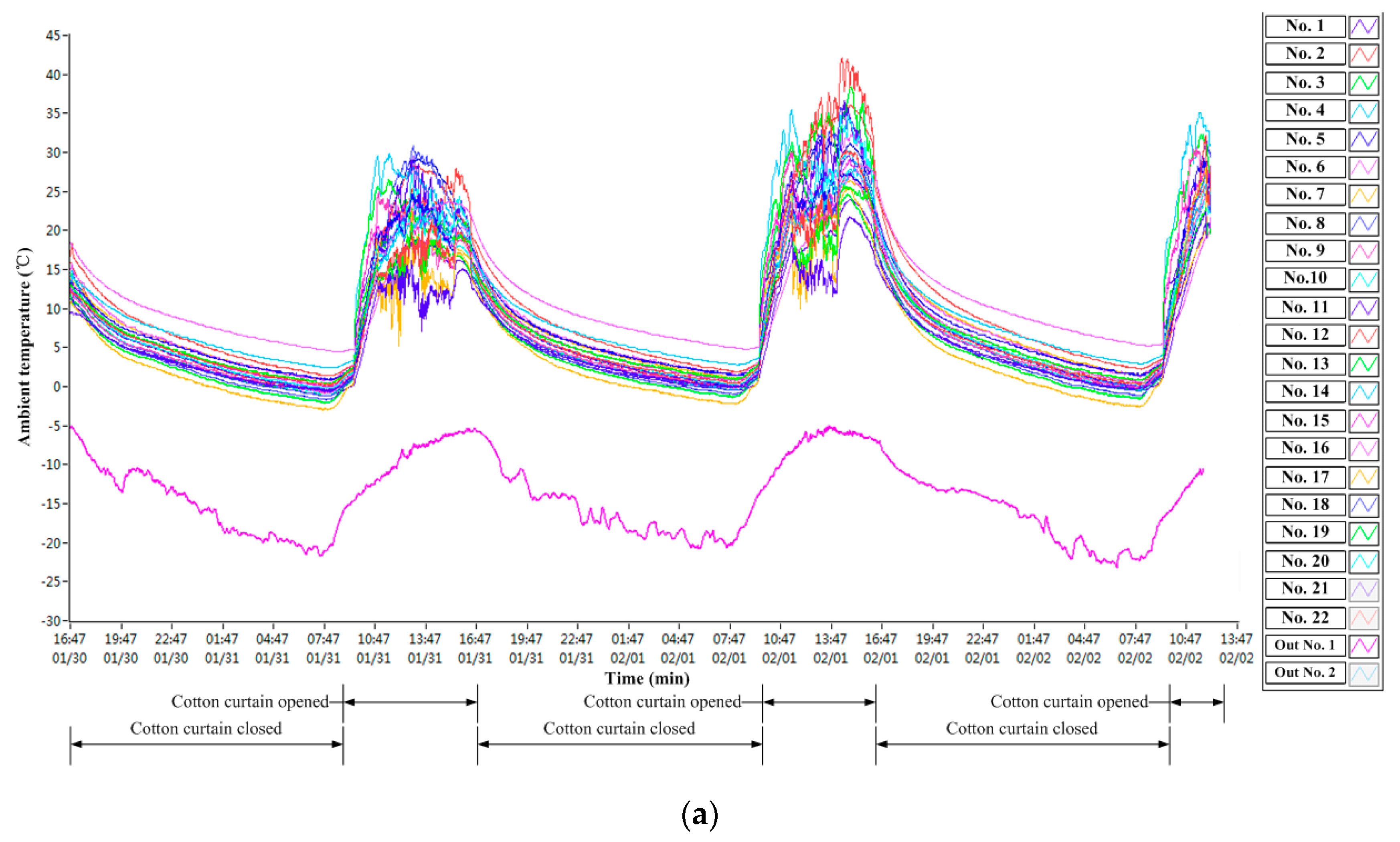
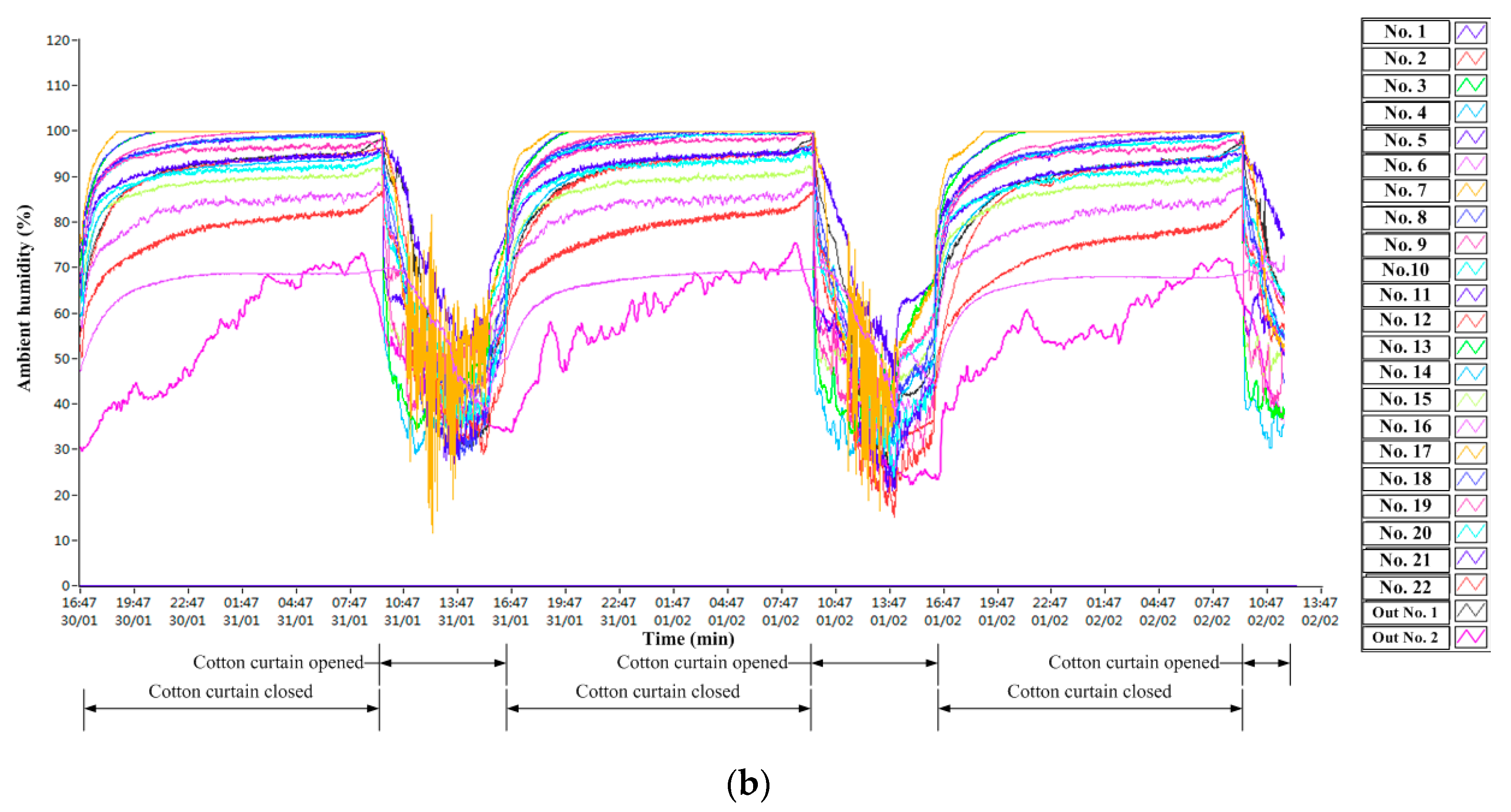
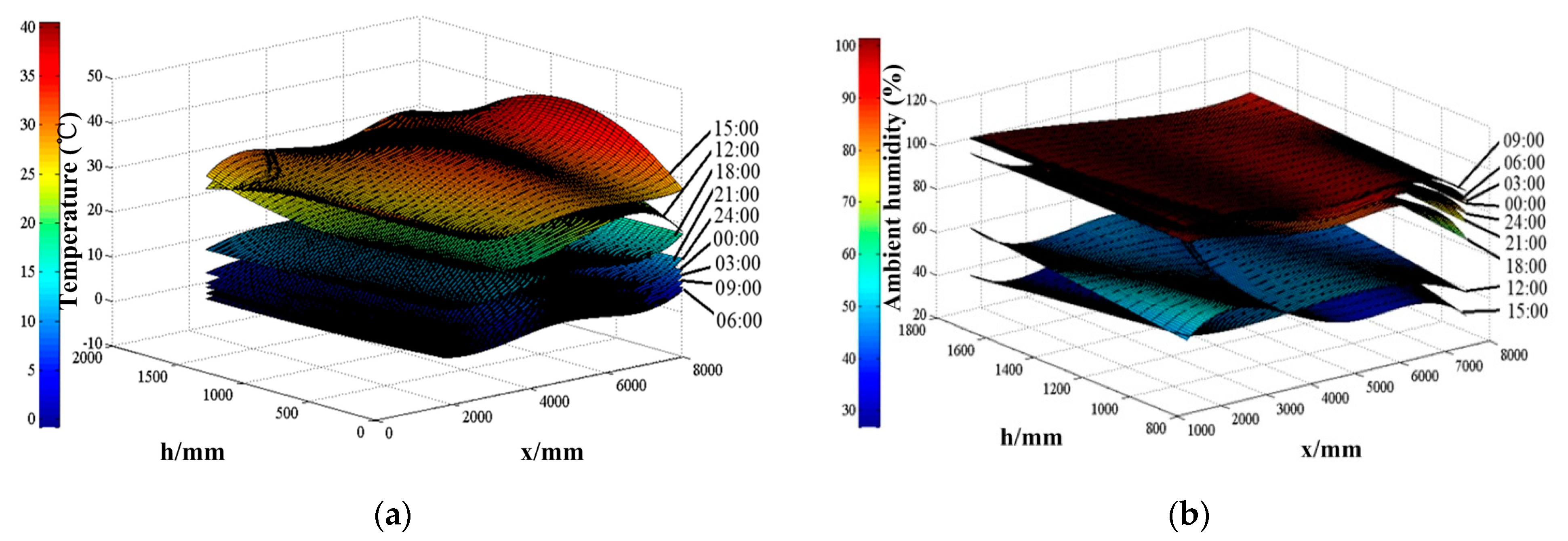
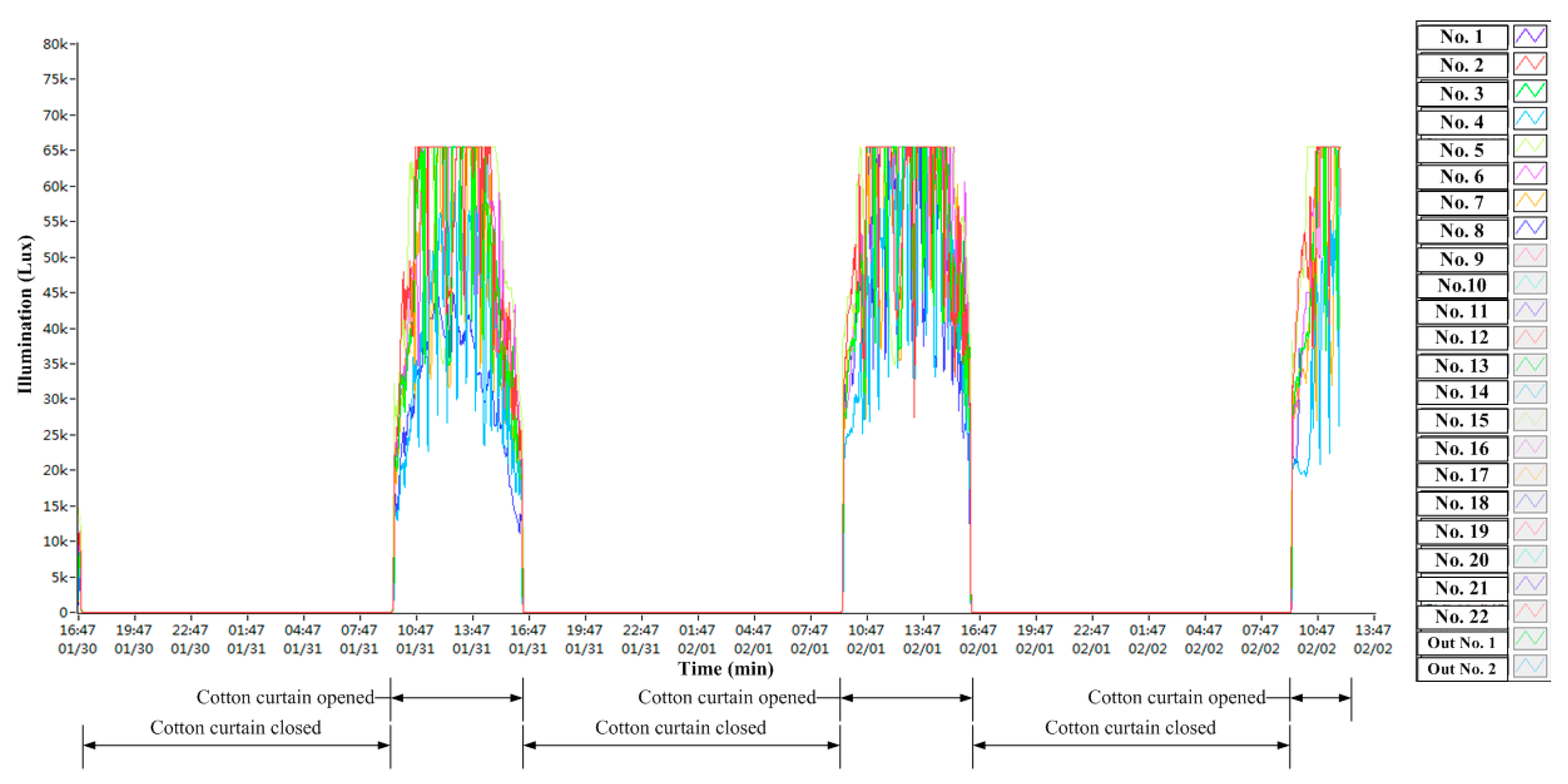

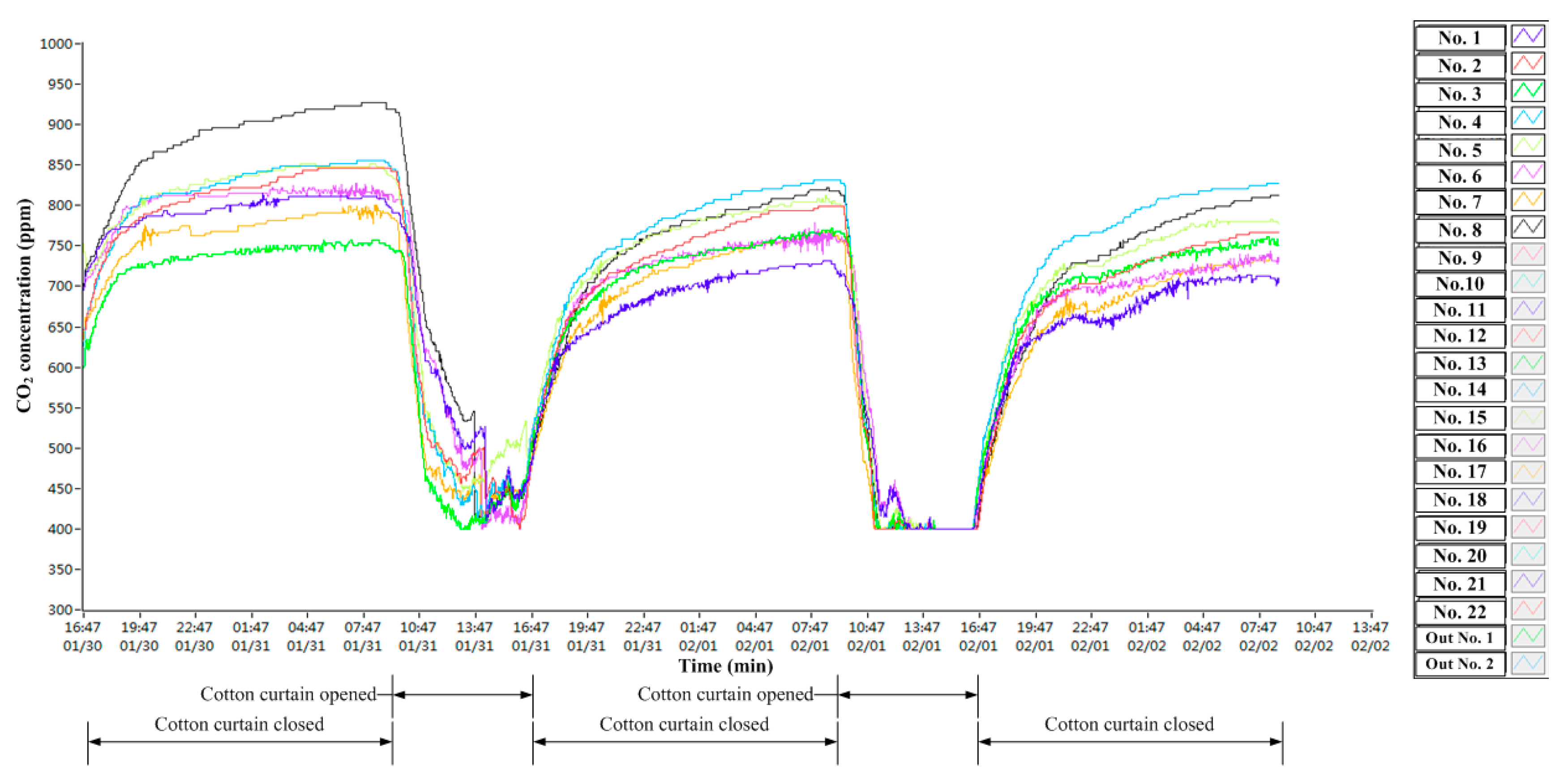

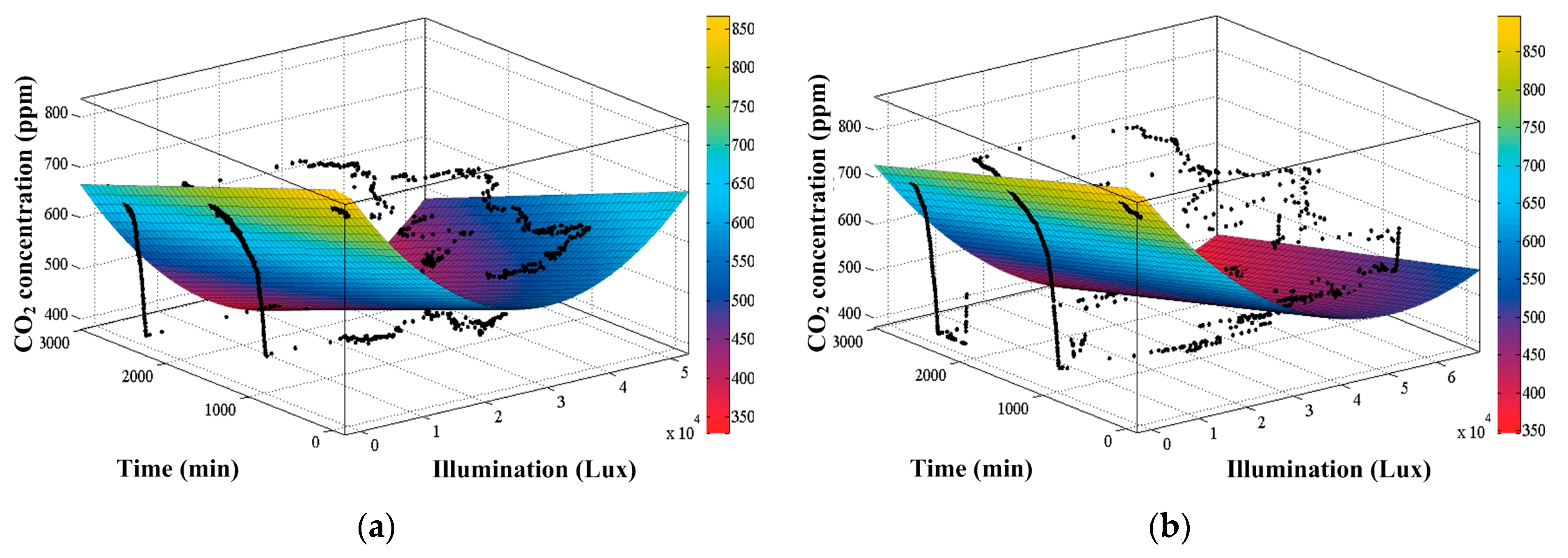
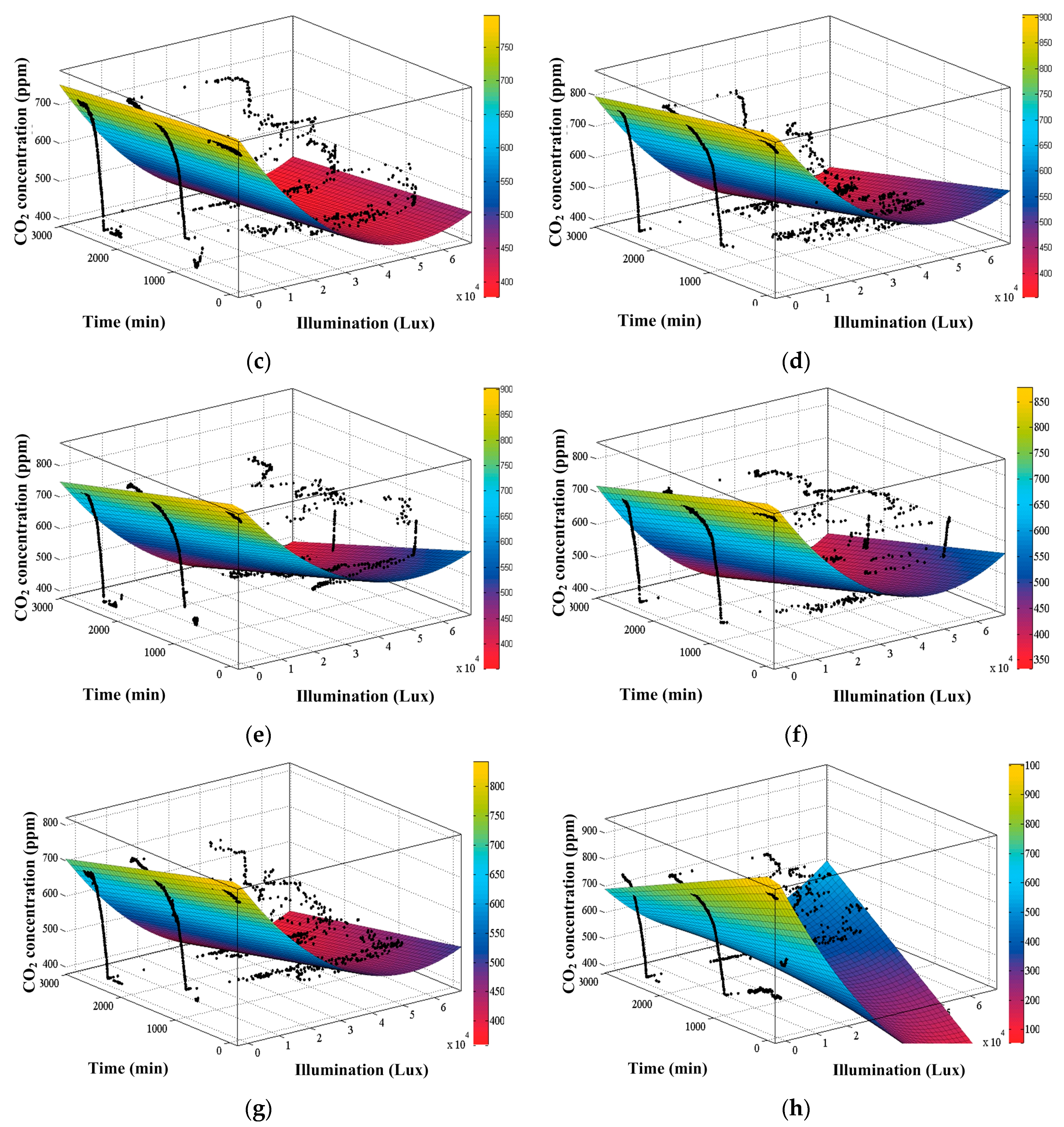
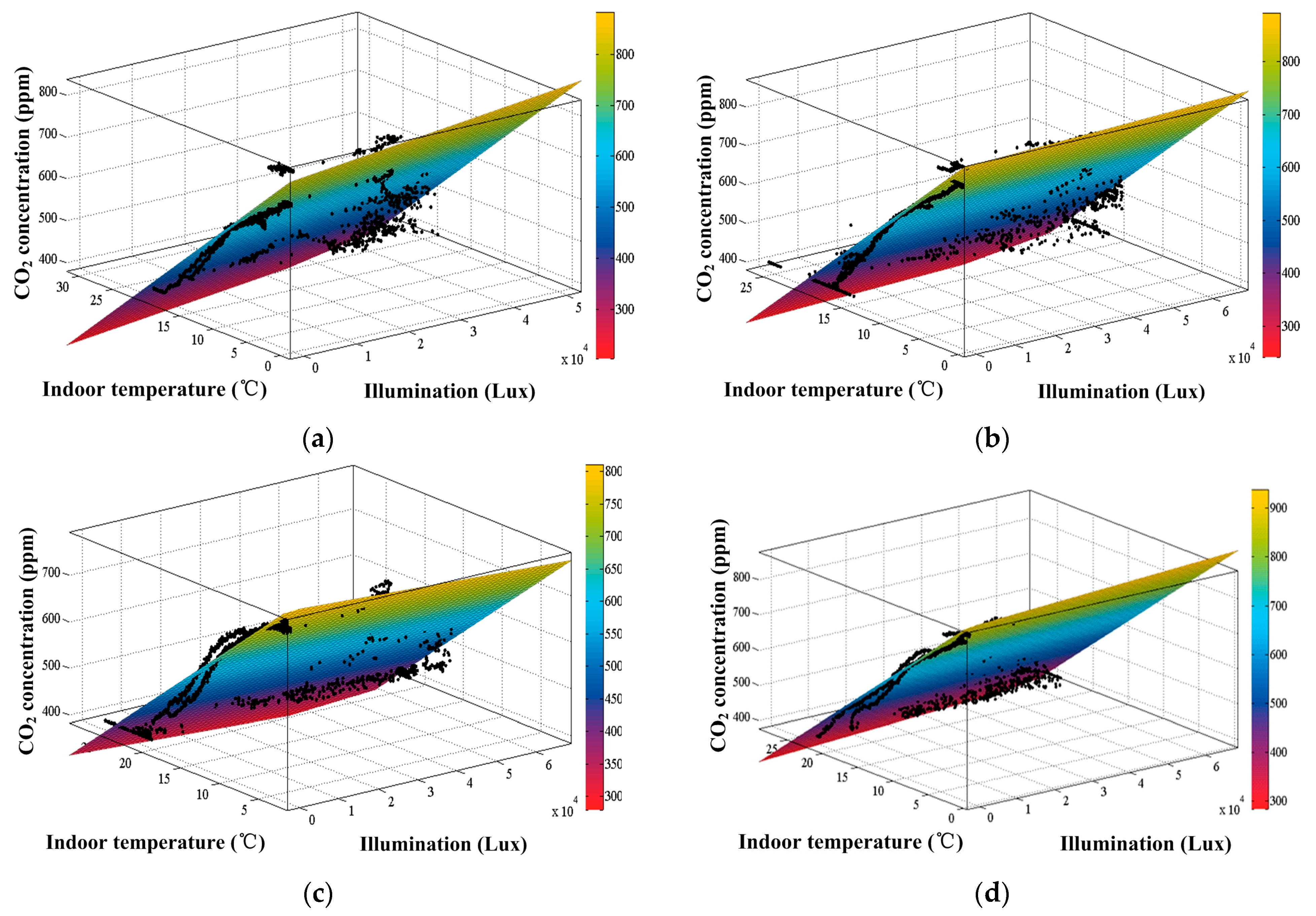
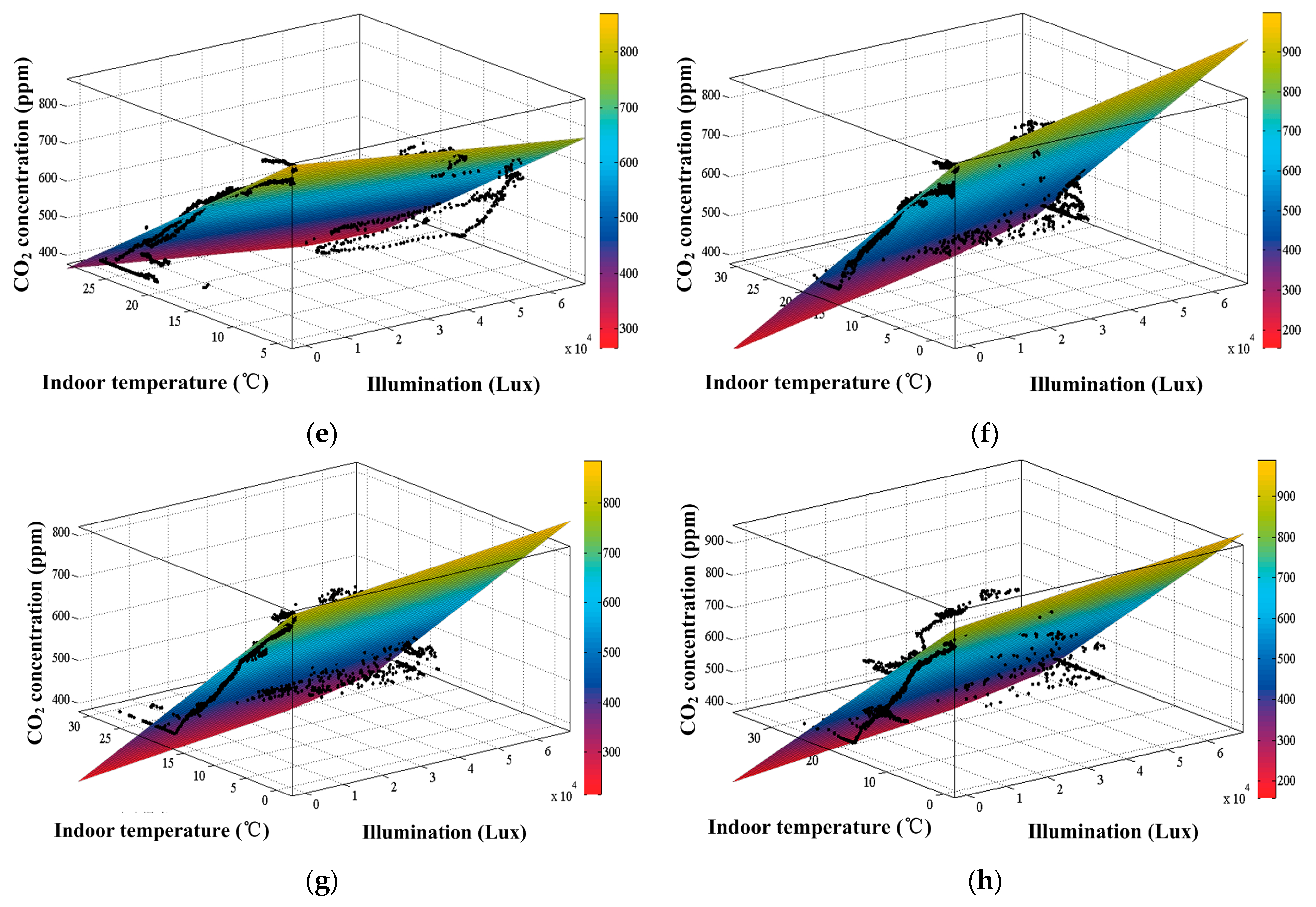
| Measuring Point | Fitting Equation | Regression Coefficient (R2) | RMSE (ppm) |
|---|---|---|---|
| 1 | 0.88 | 45.06 | |
| 2 | 0.90 | 49.67 | |
| 3 | 0.95 | 31.37 | |
| 4 | 0.93 | 42.13 | |
| 5 | 0.93 | 39.45 | |
| 6 | 0.93 | 38.01 | |
| 7 | 0.92 | 38.98 |
| Measuring Point | Fitting Equation | Regression Coefficient (R2) | RMSE (ppm) |
|---|---|---|---|
| 1 | 0.89 | 43.03 | |
| 2 | 0.95 | 35.28 | |
| 3 | 0.96 | 29.02 | |
| 4 | 0.98 | 25.1 | |
| 5 | 0.91 | 45.30 | |
| 6 | 0.93 | 38.36 | |
| 7 | 0.93 | 35.86 |
Disclaimer/Publisher’s Note: The statements, opinions and data contained in all publications are solely those of the individual author(s) and contributor(s) and not of MDPI and/or the editor(s). MDPI and/or the editor(s) disclaim responsibility for any injury to people or property resulting from any ideas, methods, instructions or products referred to in the content. |
© 2023 by the authors. Licensee MDPI, Basel, Switzerland. This article is an open access article distributed under the terms and conditions of the Creative Commons Attribution (CC BY) license (https://creativecommons.org/licenses/by/4.0/).
Share and Cite
Zhang, C.; Liu, H.; Wang, C.; Zong, Z.; Wang, H.; Zhao, X.; Wang, S.; Li, Y. Testing and Analysis on the Spatial and Temporal Distribution of Light Intensity and CO2 Concentration in Solar Greenhouse. Sustainability 2023, 15, 7001. https://doi.org/10.3390/su15087001
Zhang C, Liu H, Wang C, Zong Z, Wang H, Zhao X, Wang S, Li Y. Testing and Analysis on the Spatial and Temporal Distribution of Light Intensity and CO2 Concentration in Solar Greenhouse. Sustainability. 2023; 15(8):7001. https://doi.org/10.3390/su15087001
Chicago/Turabian StyleZhang, Chunhui, Haiyang Liu, Chunguang Wang, Zheying Zong, Haichao Wang, Xiaodong Zhao, Shuai Wang, and Yanan Li. 2023. "Testing and Analysis on the Spatial and Temporal Distribution of Light Intensity and CO2 Concentration in Solar Greenhouse" Sustainability 15, no. 8: 7001. https://doi.org/10.3390/su15087001
APA StyleZhang, C., Liu, H., Wang, C., Zong, Z., Wang, H., Zhao, X., Wang, S., & Li, Y. (2023). Testing and Analysis on the Spatial and Temporal Distribution of Light Intensity and CO2 Concentration in Solar Greenhouse. Sustainability, 15(8), 7001. https://doi.org/10.3390/su15087001






